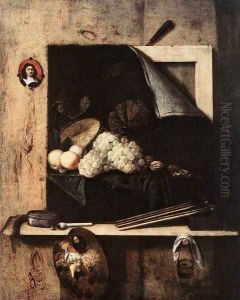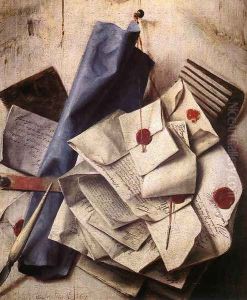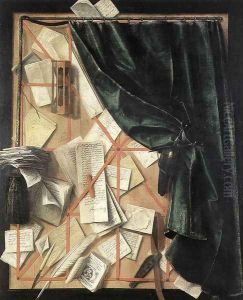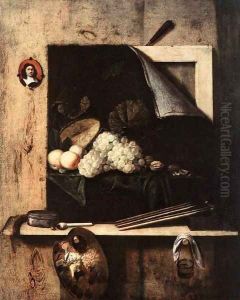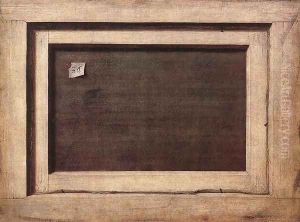Cornelis Gijsbrechts Paintings
Cornelis Gijsbrechts, or Cornelis Norbertus Gijsbrechts, was a Flemish painter who specialized in trompe-l'œil, a painting technique that creates the optical illusion of three-dimensional space on a two-dimensional surface. His exact birth date is not known, but he was active as a painter from around the mid-1650s to the late 1670s. The place of his birth is also uncertain, though it is believed he was born in Antwerp, in what is now Belgium.
Gijsbrechts' work primarily consisted of still life paintings that often depicted everyday objects such as boards with various items attached, including musical instruments, artist's tools, and other objects that appeared to project out of the painting. His compositions were cleverly designed to deceive the viewer's eye and were celebrated for their virtuosity and wit. He also painted vanitas still lifes, which include symbols of death or change as a reminder of their inevitability, and were meant to convey moral messages about the transience of life.
Around 1660, Gijsbrechts worked in the German city of Regensburg, and later, he became court painter to King Frederik III of Denmark, a position he held from 1668 to 1672. While in Denmark, he produced several works for the king's Kunstkammer (art chamber), including paintings that looked like the backs of framed paintings, complete with stickers and labels, creating an illusionistic challenge for viewers.
Despite his apparent success, not much is documented about Gijsbrechts' life after his time in Denmark. His date of death is unknown, as are the circumstances of his later years. However, his last known work is dated 1675, suggesting that he was active at least until that time. The enigmatic nature of his life and the scarcity of biographical details contribute to the aura of mystery surrounding Gijsbrechts, much like the enigmatic qualities of his art. His work is held in various museum collections and continues to be of interest for its playful approach to perception and reality, marking him as an important figure in the development of still life and trompe-l'œil painting in Northern Europe.
